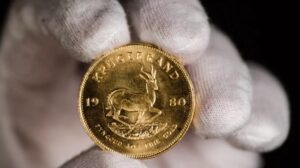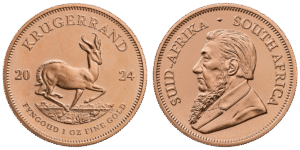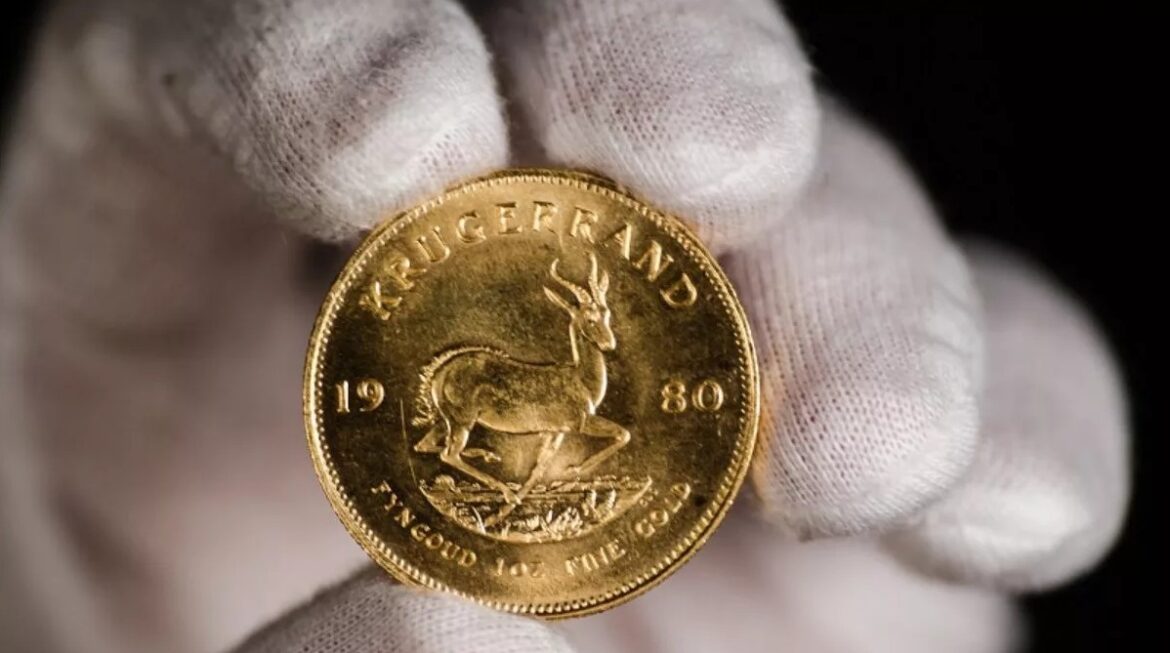Since its introduction in 1967, the South African Krugerrand has become one of the most iconic gold bullion coins worldwide. More than just a valuable investment, the Krugerrand tells a rich story of South Africa’s mining heritage, economic ambition, and global influence.

The Birth of the Krugerrand
In the mid-1960s, the South African Mint sought a way to make gold ownership accessible beyond the wealthy elite. South Africa’s vast gold reserves offered a unique opportunity to democratize gold investing. Working alongside the Chamber of Mines, they developed the Krugerrand, a durable coin struck from 22-karat gold, composed of 91.67% pure gold and 8.33% copper. This alloy gave the coin a distinctive reddish hue while enhancing its strength for everyday handling. The coin contains exactly one troy ounce (31.1035 grams) of pure gold but weighs approximately 33.93 grams in total. It measures 32.77 millimeters in diameter and is 2.84 millimeters thick.
The Krugerrand’s design paid tribute to South African heritage: one side featured a portrait of Paul Kruger, the former president, while the other displayed the springbok antelope, a national symbol. Priced at about $50 USD for one full ounce of gold, the Krugerrand quickly attracted global interest and revolutionized bullion investing by making gold affordable and accessible.
Economic Significance
Throughout the 20th century, South Africa was the world’s leading gold producer, with estimated gold reserves exceeding 40,000 tons. The country’s economy was heavily dependent on mining exports, and gold was a critical source of foreign exchange. The launch of the Krugerrand in 1967 provided a direct channel for gold sales to international investors, significantly boosting South Africa’s gold export revenues.
By the late 1970s, annual Krugerrand sales surpassed $1 billion, making it the most traded gold coin globally and a major contributor to the country’s hard currency earnings. This influx of foreign capital was vital for South Africa’s economy during a period of increasing international pressure.

The Krugerrand Amid Apartheid
The Krugerrand’s success was met with political obstacles. Many Western countries imposed bans on Krugerrand imports in the 1970s and 1980s as part of sanctions against South Africa’s apartheid policies. These restrictions aimed to isolate South Africa economically due to its institutionalized racial segregation.
Despite these sanctions, the Krugerrand remained popular in markets such as the United States, Japan, Switzerland, and the Middle East. The steady inflow of foreign capital through Krugerrand sales helped stabilize the South African rand during this turbulent period, cushioning the economy against sanctions and political isolation. Rather than diminishing the coin’s appeal, these challenges strengthened its reputation as a reliable store of value.
Cultural Symbolism and Lasting Legacy
More than just a financial asset, the Krugerrand has become a powerful cultural icon and a prized collector’s item. The South African Mint has kept interest alive by releasing special proof and commemorative editions, limited runs, and high-quality certified coins that celebrate the coin’s rich heritage. This collector appeal, enhanced by cultural recognition, such as Nelson Mandela’s role in preserving its iconic design, and appearances in popular culture, like Lethal Weapon 2, has boosted its global prestige.
Entering the 21st century, the Krugerrand remains one of the most widely traded gold bullion coins. Milestone releases like the 50th-anniversary “Giant” coin in 2017 highlight ongoing demand. With nearly six decades of history, a distinctive design, and intrinsic gold value, the Krugerrand continues to symbolize South African pride and serve as a trusted long-term investment.

